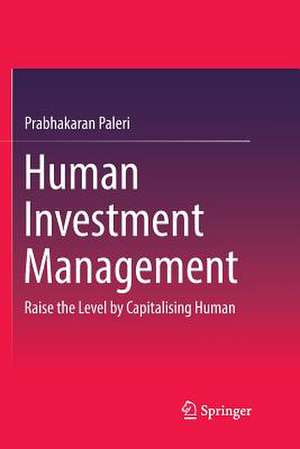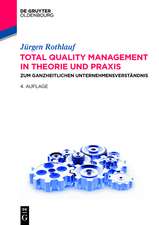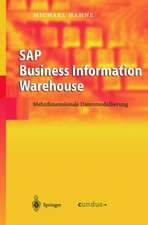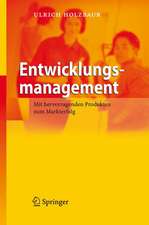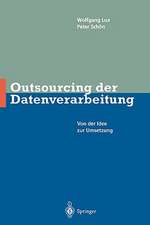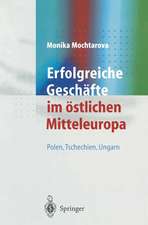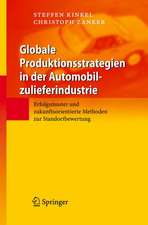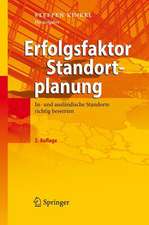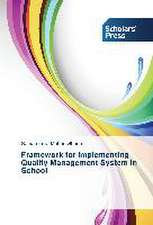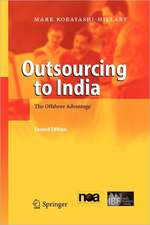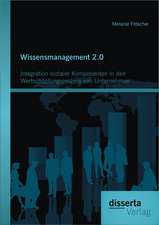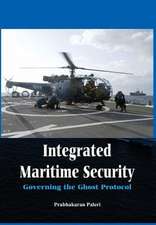Human Investment Management: Raise the Level by Capitalising Human
Autor Prabhakaran Palerien Limba Engleză Paperback – 23 dec 2018
| Toate formatele și edițiile | Preț | Express |
|---|---|---|
| Paperback (1) | 641.71 lei 6-8 săpt. | |
| Springer Nature Singapore – 23 dec 2018 | 641.71 lei 6-8 săpt. | |
| Hardback (1) | 648.05 lei 6-8 săpt. | |
| Springer Nature Singapore – 8 sep 2017 | 648.05 lei 6-8 săpt. |
Preț: 641.71 lei
Preț vechi: 754.95 lei
-15% Nou
Puncte Express: 963
Preț estimativ în valută:
122.81€ • 133.35$ • 103.16£
122.81€ • 133.35$ • 103.16£
Carte tipărită la comandă
Livrare economică 23 aprilie-07 mai
Preluare comenzi: 021 569.72.76
Specificații
ISBN-13: 9789811355516
ISBN-10: 9811355517
Pagini: 302
Ilustrații: XX, 302 p. 28 illus.
Dimensiuni: 155 x 235 mm
Greutate: 0.45 kg
Ediția:Softcover reprint of the original 1st ed. 2018
Editura: Springer Nature Singapore
Colecția Springer
Locul publicării:Singapore, Singapore
ISBN-10: 9811355517
Pagini: 302
Ilustrații: XX, 302 p. 28 illus.
Dimensiuni: 155 x 235 mm
Greutate: 0.45 kg
Ediția:Softcover reprint of the original 1st ed. 2018
Editura: Springer Nature Singapore
Colecția Springer
Locul publicării:Singapore, Singapore
Cuprins
Acknowledgements.- Preface.- Tables.- Figures.- Chapter 1 : Introduction—Human Investment Management.- Chapter 2 : Human Activities and Activity Pyramid.- Chapter 3 : Human Organisations.- Chapter 4 : Human Skill Requirement.- Chapter 5 : Human Classification in Work Environment.- Chapter 6 : Accounting Human under Investment Principles.- Chapter 7 : Organising Environment and Human Investment.- Chapter 8 : Employment relations and Human Investment Management.- Chapter 9 : Strategic Human Investment Management.- Chapter 10 : Case Studies.- Glossary.- Notes.- Annexes.- Index.
Notă biografică
Dr. Prabhakaran Paleri is a strategist, researcher, academician and author with professional experience in Indian naval, customs and coast guard services and also as non-executive corporate director in public sector undertakings. He retired as the director general of the Indian Coast Guard in August 2006, and thereafter continued as a research scholar and academician in India and abroad. He has researched and authored eight books and various papers on strategic and management topics. His interests lie in researching in management and national security strategy, and continuing academic pursuit as a professor and scholar.
Textul de pe ultima copertă
This book presents a thought-provoking case for looking at human resource management from an entirely different perspective. In the modern world, organizations have to optimally manage resources to achieve the best results, and the best way to do this is to identify humans as instruments of investment and not as resources. Humans use resources in an activity. Managing people, as a subject, was first studied as part of personnel management, and became known as human resource management (HRM) in the early 80s. However, the basic principles remained largely unchanged. The book argues that it is time that HRM is replaced by human investment management (HIM), where the entire approach of employee management in an organization shifts gears to human investment in activities. In this approach no human is considered bad in relation to an organization, if selected appropriately, and trained well. Everyone is productive, though the returns may differ. Humans can be invested in areas where they are best or can be trained to be the best according to various factors. Unlike any other investment instruments, humans’ value can be continuously upgraded for higher returns. Thus the core of HIM is to maximize the return from each employee as an individual or as a member of the group with minimum expenditure and effort in him or her. HIM can therefore reengineer and replace HRM slowly and steadily at the desired pace where maximum attention is paid to employee investment for improved results. This is unlike HRM, which primarily focuses on employee relations. Turning around HRM to HIM will be the first step in inclusively aligning strategic human resource management with the overall human management. As such, HIM should be seen as a process by which the asset or capital value of individual humans can be increased by turning them into capital humans, an entirely different outlook from the oft-used term human capital.
Caracteristici
First scholarly book that aims to change the face of human management in organizations Highlights the productive returns on investing people in activities Analyses the human element to discover the centre of gravity in organizations Argues that human resource management is passé, and that human investment management is the way forward Presents ehuman managers with a challenge for managing people tomorrow
